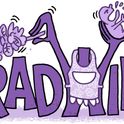Tom lives at the edge of a wood. We look down across the meadow from his study and he picks out birch and beech, oak and sycamore. He spots wood pigeons and kestrels. According to my tests, Tom's basic visual functions are fine. He has a keen eye. Yet the other week he mistook his wife for a complete stranger. She went shopping and came back wearing a new jacket. It threw him. On occasions he has failed to recognise his son. Tom is face-blind. He has a rare neurological condition, congenital prosopagnosia, which means he is unable to distinguish one face from another. He does not even recognise himself.
We look at an old school photograph. It stretches from one end of the table to the other. Six hundred grammar school boys unfurled from 1964. Tom starts tapping his finger on the monochrome heads: three rows down and 39 from the left. "That's me," he says. He has located himself by following the usual co-ordinates but he does not recognise any of his classmates. They all look the same, as do the masters in the front row. "I know that's Mrs Draper," he says, "because she's wearing a skirt." The school secretary is the only female in the picture. I ask if he recognises himself in the mirror. "Who else could it be?" he says. But does his face look different? Does it feel more familiar than others - mine, for example? He's older, he says. He has more wrinkles. If he feels an affinity with the face in the mirror it seems it's more through synchrony of action than familiarity of features. "But if you saw yourself in the street," I begin - "Now we're getting silly," he says.
But I know that people do sometimes see themselves in the street. I have come across the doppelg?nger in the neurology clinic. One of my clients, as a prelude to her epileptic seizures, would see a ghostly counterpart of herself sitting still and expressionless in the corner of the room. Another, with an injury to the parietal lobe, would catch glimpses of an inquisitive double peering over his shoulder in the shaving mirror. They're known as autoscopic hallucinations and may be a pathological elaboration of the sense of presence that many of us feel from time to time when we are alone, keeping our own company. Identification with these shadow-selves is not always instant. There is often a slow dawning or a double take. "I was in the doctor's surgery staring into the garden," said one brain-injured first world war veteran. "Then I saw the man about four feet away to my left. It suddenly dawned on me who it was. It was me."
That Tom should fail to identify himself in a photograph, or be uncertain as to whether he recognises his reflection in the mirror, is perhaps easier to comprehend than his failure to recognise his wife and children. Self-recognition demands more complex cognitive processing than the recognition of others. We are intensely social animals and evolution favoured the astute. For our ancestors, enmeshed in hierarchical social groupings that were finely balanced between competition and co-operation, survival depended on the rapid identification and decoding of the facial features of other members of the group: rivals, mates and affiliates. The basic components of face perception are genetically hard-wired. (Newborn babies respond selectively to faces within ten minutes of birth.) But evolution did not equip us to recognise ourselves. How could it? The mirror is a novel artefact. For most of our history, the most singular emblem of our identity - the face - has been invisible to us.
Recognition of oneself in the mirror requires mental manoeuvres beyond the activities of the brain's outwardly oriented, automatic face recognition units. It presupposes an inward gaze towards some mental model of the self: in other words, self-awareness. Humans are almost, but not quite, unique in this regard. Before indifference sets in, animals generally react with alarm or curiosity when placed before a mirror. They behave fearfully, aggressively or affiliatively, as if confronted by another animal. Chimpanzees, though, share our fascination with the reflected image. In his classic work The Mentality of Apes, Wolfgang K?hler describes his chimps inspecting pools of urine on the floor of their enclosure, "bending sideways with eyes fixed on the liquid and moving slowly to and fro in order to catch the reflection of objects from outside the window." Presented with a mirror, a chimp will groom itself or explore parts of the body usually unavailable for inspection. If scrutinising one's anus is a sign of self-awareness then chimps have at least the rudiments.
When Tom started to roll up the school photograph I noticed something. Back row, extreme left, there was a blond boy with heavy, black spectacles and an inane grin. I panned to the other end of the row and there he was again. I asked Tom if he recalled identical twins. He wasn't sure. It was a long time ago. The boys in that row were a couple of years older, anyway. He wouldn't necessarily have known them, although he thought he probably would have remembered, especially given the glasses and the striking blond hair - useful recognition cues for a prosopagnosic. Were they twins? I wondered. Or had a single, mischievous boy appeared twice, sprinting from one end of the row to the other as the camera slowly rotated? Tom shrugged, but I couldn't shake off the niggling uncertainty.












